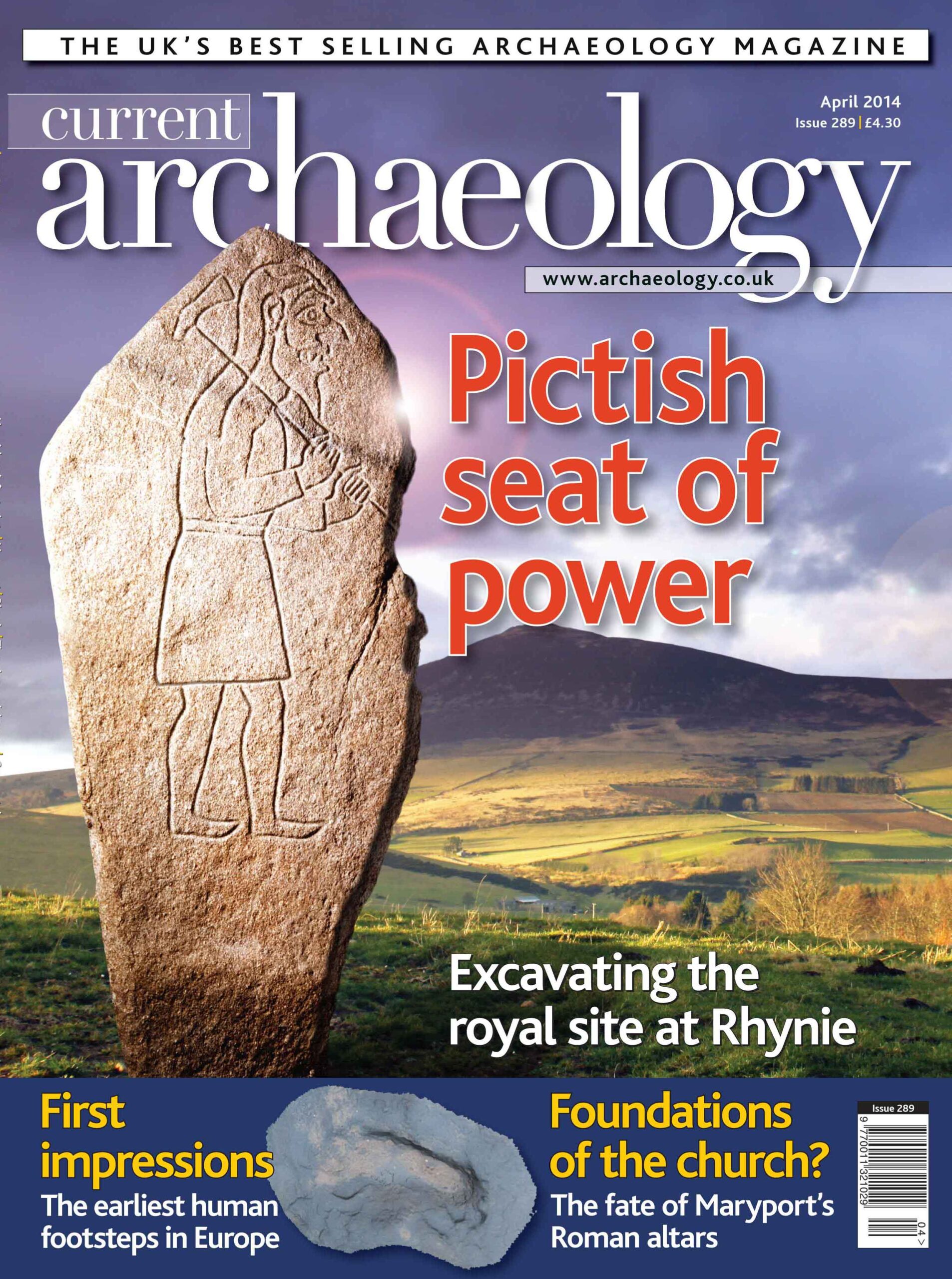When Martin Bates left his geophysical equipment to take its readings and wandered down to the beach at Happisburgh he made a remarkable discovery. An old clay bed recently exposed by the sea was pockmarked with footprints. This trail has proven to be the earliest trace of a human journey in Europe, providing a powerful glimpse of life in Britain almost one million years ago.
Mysterious hollows of another kind were detected at Maryport in 1870. Theywere long thought to be ritual receptacles for Roman altars, but recent investigation revealed that these pits were monumental postholes. What can this edifice tell us about the community living at Maryport as imperial control ebbed away?
Another group active as Roman Britain imploded were the Picts. It is well known that these fearsome fighters also had an artistic side. Now excavations in a field at Rhynie that yielded a fine crop of ornate symbol stones are exposing a possible royal centre ringed by a formidable defensive system.
Monumental enclosures are not thin on the ground at Thornborough in Yorkshire,where three henges were built straddling the course of a cursus. Recent study of its setting has transformed our understanding of the prehistoric landscape, and raised the question of whether the henges drew inspiration from the stars in Orion’s belt.
The origin of ‘onyx marble’, a seemingly sumptuous stone gracing some of England’s most spectacular cathedrals, was also a renowned mystery. Now that its highly unconventional source has been unmasked, it is difficult to see this elegant architecture in quite the same way.
FEATURES/n
FIRST IMPRESSIONS/n
Discovering the earliest human footprints in Europe
Tangible traces of a group of early humans who were walking in the Thames estuary almost a million years ago have been found on the Norfolk coast. What can these tracks tell us about Britain’s earliest human inhabitants?
MARYPORT’S MYSTERY MONUMENTS/n
Investigating gigantic timber structures from the imperial twilight
When a series of pits containing Roman altars were revealed to be not ritual deposits, but postholes, new questions were raised. What was this structure, and what was it for?
‘A VERY ROYAL PLACE’/n
Rhynie and the Picts
Northern Pictland was traditionally seen as an Early Medieval backwater, and its inhabitants as shadowy figures. Ongoing excavations at Rhynie are set to redress this imbalance, painting a picture of luxury trade and the birth of kingdoms.
EARTH AND SKY/n
The Thornborough Henge monument complex
Hailed as the ‘Stonehenge of the North’, Thornborough’s hinterland was threatened by modern quarrying. How has new research helped our understanding of this remarkable ritual landscape – and its preservation?
GOSSENSTEIN/n
Discovering an unexpected source of English Cathedral columns
In the 12th century, an attractive purple-brown stone called ‘onyx marble’ was imported for use in Canterbury and Rochester’s cathedrals – but recent findings suggest surprisingly mundane origins for this exotic material.
NEWS/n
Recapturing Luton Castle; Isotopes and the Adventus Saxonum; Plantagenetics: Richard III’s genome to be sequenced; Romans around Wroxeter; A grave affair from Medieval Nottingham; Plain to see: West Torbreck’s beaker burial; Much Marcle’s memorial mystery; Finding St Ffinan’s, Anglesey; Monastic community archaeology on the Isle of Mull
/n
REGULARS/n
Context
Surveying Britannia’s final frontier at Rough Castle on the Antonine Wall
Reviews
Salt in Prehistoric Europe; Religion in Medieval London; Roman Yorkshire
Sherds
Chris Catling’s irreverent take on heritage issues
Interview
Following the announcement that the Institute for Archaeologists has been granted a Royal Charter, we speak to IfA honorary chair Jan Wills about what this means for the Institute, and for archaeology as a profession.
Odd Socs
The Thames Ironworks Heritage Trust

